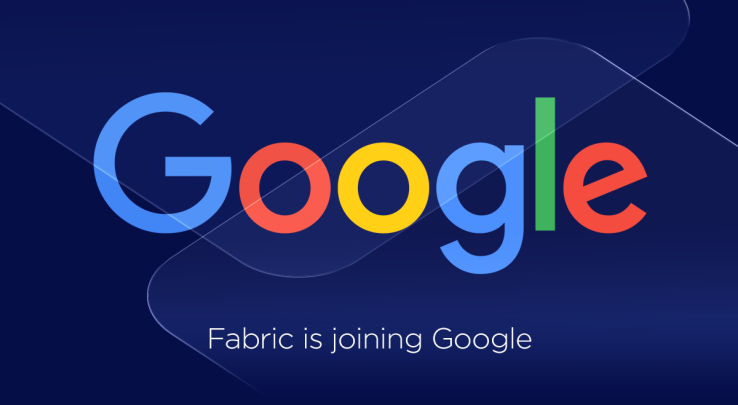

Google is taking over Twitter’s mobile app developer platform Fabric, as well as its Crashlytics crash reporting system, Answers mobile app analytics, Digits SMS login system and FastLane development automation system. Twitter launched Fabric as a modular SDK in 2014 to allow developers to pick and choose different tools to improve their apps, and it now serves apps reaching 2.5 billion users built by 580,000 developers.
But as Twitter tries to get into better financial shape, it’s cutting non-essential divisions. By passing the platform off to Google, it can remove the costs of running Fabric without screwing over its developers by suddenly shutting it down. Google will continue to operate Fabric and its related tools, and developers shouldn’t have to do anything to support the transition.
It begs the question, is Twitter trying to slim down to take another swing at getting acquired?
Thinner Twitter
After acquisition talks last year failed, Twitter must become self-sustaining. Basically, if it doesn’t make enough money, it’s getting the axe. That’s why Vine got shut down yesterday and relaunched as Vine Camera, which no longer hosts videos because that can get expensive. Now it’s Fabric’s turn, as Twitter apparently sees enterprise developer tool sales as an unlucrative detour from its core ad and data business.
Twitter tells me it will continue to run and invest in its other developer-facing products, such as its Publisher platform, Twitter Kit, Gnip, TweetDeck, MoPub, plus its Public APIs and Ads APIs because they are tied directly to its core business and align with its priorities for 2017.

The Fabric team announced “Today we enter the next chapter for Fabric and are pleased to announce that we’ve signed an agreement for Fabric to be acquired by Google and for our team to join Google’s Developer Products Group, working with the Firebase team.” Google’s Firebase product manager Francis Ma writes, “Our missions align closely: help developers build better apps and grow their business.”
Terms of the deal weren’t disclosed, and Twitter refused to provide more detail upon request. Google told TechCrunch that all Fabric team members will be coming aboard. Digits shall remain under Twitter’s control during the transition period.
Crashlytics will become Firebase’s main crash reporting tool. Founded in 2011, Twitter acquired Crashlytics in 2013 for $38.2 million in common stock plus stock options that reportedly made the deal worth over $100 million. [Correction: We originally didn’t mention the stock options that boost the value of the Crashlytics deal.] After six years, co-founder Jeff Seibert will be stepping back from Crashlytics, which will now be led by Twitter’s VP of engineering, Rich Paret.
Though Twitter itself isn’t allowed in China, Crashlytics counted internet giants like Alibaba and Baidu as users. Twitter still sells advertising space to Chinese companies, but it has now sold its biggest bridge to the country.

While Twitter initially charged for enterprise access to tools like Crashlytics and Answers, it later made them free. The strategy seemed to be that if more developers were part of the Twitter ecosystem, they’d build apps that piggyback on the microblogging service and provide it with extra functionality and platform lock-in.
But that strategy may have proved too indirect for Twitter as it tries to cut losses, which were $103 million in Q3 2016. Facebook similarly shut down its Parse mobile development platform last year, and its founder Ilya Sukhar today tweeted that he was jealous that it didn’t get sold to Google like Fabric.
Will more Twitter divisions get cut, sold off, or rolled in? Periscope, for example, could sensibly become Twitter Live, since Twitter finally just added the ability to broadcast straight from its own app. If the dedicated livestream discovery and consumption features of Periscope’s own app don’t pull their weight, it might make sense to shrink the team and make the product entirely part of Twitter’s app.
If Twitter can reduce its headcount, ditch superflous divisions, and reinforce its core product and business, it might have another shot at selling to someone with the resources to make it a financial success.
Devs trust Google, not Twitter
Google, on the other hand, is deeply focused on turning mobile app developers into paid customers by upselling them from free dev tools to paid tiers. It acquired LaunchKit in July to give devs easier ways to create App Store screenshots and websites for their mobile apps.
Having watched Amazon’s success with AWS, Google sees opportunities in selling its robust backend infrastructure to developers who don’t want to build every piece of an app’s architecture themselves.

This won’t be the first time Twitter developers feel like it pulled a fast one on it. In the 2008-2012 era, when Twitter desperately needed help getting off the ground and establishing hardcore usage, it offered APIs for developers to build their own Twitter clients.
But at the end of 2012, as it sought to ramp up its advertising business in its own clients’ apps, it suddenly restricted API access, essentially murdering several tools that developers had spent years building to Twitter’s benefit. Then Twitter did the same to its firehose data resellers like DataSift, cutting them off in favor of charging for access to the Gnip service it acquired.
Jack Dorsey later apologized for Twitter thrashing developers this way, but after pulling the rug out from under them, the lack of trust in the community hampered Fabric’s success. Now with it pawning off Fabric to Google, it’s hard to imagine developers putting much faith in Twitter going forward.

